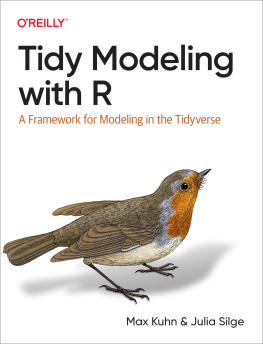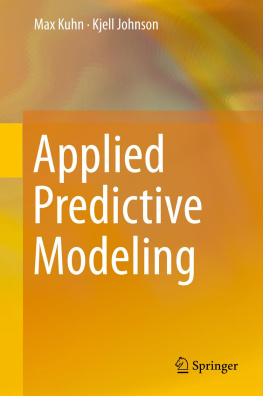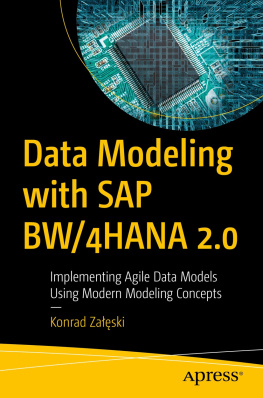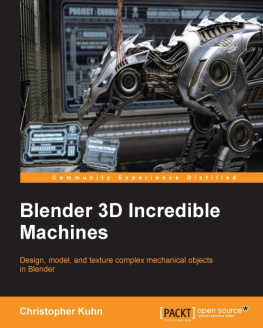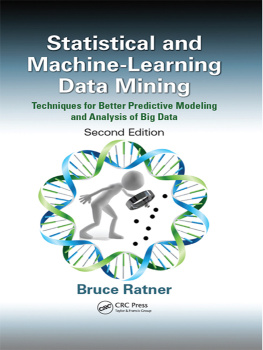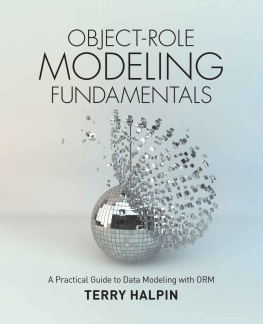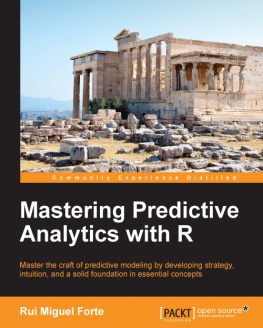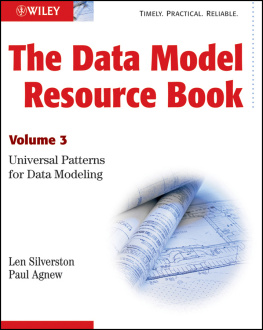To Amy: When you read this, know that I love you more today than every day before. M.K.
To Robert: Happy 20 years of choosing each other.
J.S.
Preface
Welcome to Tidy Modeling with R! This book is a guide to using a collection of software in the R programming language for model building called tidymodels , and it has two main goals:
First and foremost, this book provides a practical introduction to how to use these specific R packages to create models. We focus on a dialect of R called the tidyverse that is designed with a consistent, human-centered philosophy and demonstrate how the tidyverse and the tidymodels packages can be used to produce high quality statistical and machine learning models.
Second, this book will show you how to develop good methodology and statistical practices. Whenever possible, our software, documentation, and other materials attempt to prevent common pitfalls.
In provides a quick tour of conventional base R modeling functions and summarizes the unmet needs in that area.
After that, this book is separated into parts, starting with the basics of modeling with tidy data principles. Chapters introduce an example data set on house prices and demonstrate how to use the fundamental tidymodels packages: recipes , parsnip , workflows , yardstick , and others.
The next part of the book moves forward with more details on the process of creating an effective model. Chapters focus on creating good estimates of performance as well as tuning model hyperparameters.
Finally, the last section of this book, Chapters cover other important topics for model building. We discuss more advanced feature engineering approaches like dimensionality reduction and encoding high-cardinality predictors, as well as how to answer questions about why a model makes certain predictions and when to trust your model predictions.
We do not assume that readers have extensive experience in model building and statistics. Some statistical knowledge is required, such as random sampling, variance, correlation, basic linear regression, and other topics that are usually found in a basic undergraduate statistics or data analysis course. We do assume that the reader is at least slightly familiar with dplyr, ggplot2, and the %>% pipe operator in R, and is interested in applying these tools to modeling. For users who dont yet have this background R knowledge, we recommend books such as R for Data Science by Wickham and Grolemund (2016). Investigating and analyzing data is an important part of any model process.
This book is not intended to be a comprehensive reference on modeling techniques; we suggest other resources to learn more about the statistical methods themselves. For general background on the most common type of model, the linear model, we suggest Fox (2008). For predictive models, Kuhn and Johnson (2013) and Kuhn and Johnson (2020) are good resources. For machine learning methods, Goodfellow, Bengio, and Courville (2016) is an excellent (but formal) source of information. In some cases, we do describe the models we use in some detail, but in a way that is less mathematical, and hopefully more intuitive.
Conventions Used in This Book
The following typographical conventions are used in this book:
ItalicIndicates new terms, URLs, email addresses, filenames, and file extensions.
Constant widthUsed for program listings, as well as within paragraphs to refer to program elements such as variable or function names, databases, data types, environment variables, statements, and keywords.
Constant width boldShows commands or other text that should be typed literally by the user.
Constant width italicShows text that should be replaced with user-supplied values or by values determined by context.
Tip
This element signifies a tip or suggestion.
Note
This element signifies a general note.
Warning
This element indicates a warning or caution.
Using Code Examples
Supplemental material (code examples, exercises, etc.) is available for download at https://github.com/tidymodels/TMwR. This book was written with RStudio using bookdown (Xie 2016). We generated all plots in this book using ggplot2 and its black and white theme (theme_bw()). An online version of this book is available and will continue to evolve after publication of the physical book.
If you have a technical question or a problem using the code examples, please email to .
This book is here to help you get your job done. In general, if example code is offered with this book, you may use it in your programs and documentation. You do not need to contact us for permission unless youre reproducing a significant portion of the code. For example, writing a program that uses several chunks of code from this book does not require permission. Selling or distributing examples from OReilly books does require permission. Answering a question by citing this book and quoting example code does not require permission. Incorporating a significant amount of example code from this book into your products documentation does require permission.
We appreciate, but generally do not require, attribution. An attribution usually includes the title, author, publisher, and ISBN. For example:

